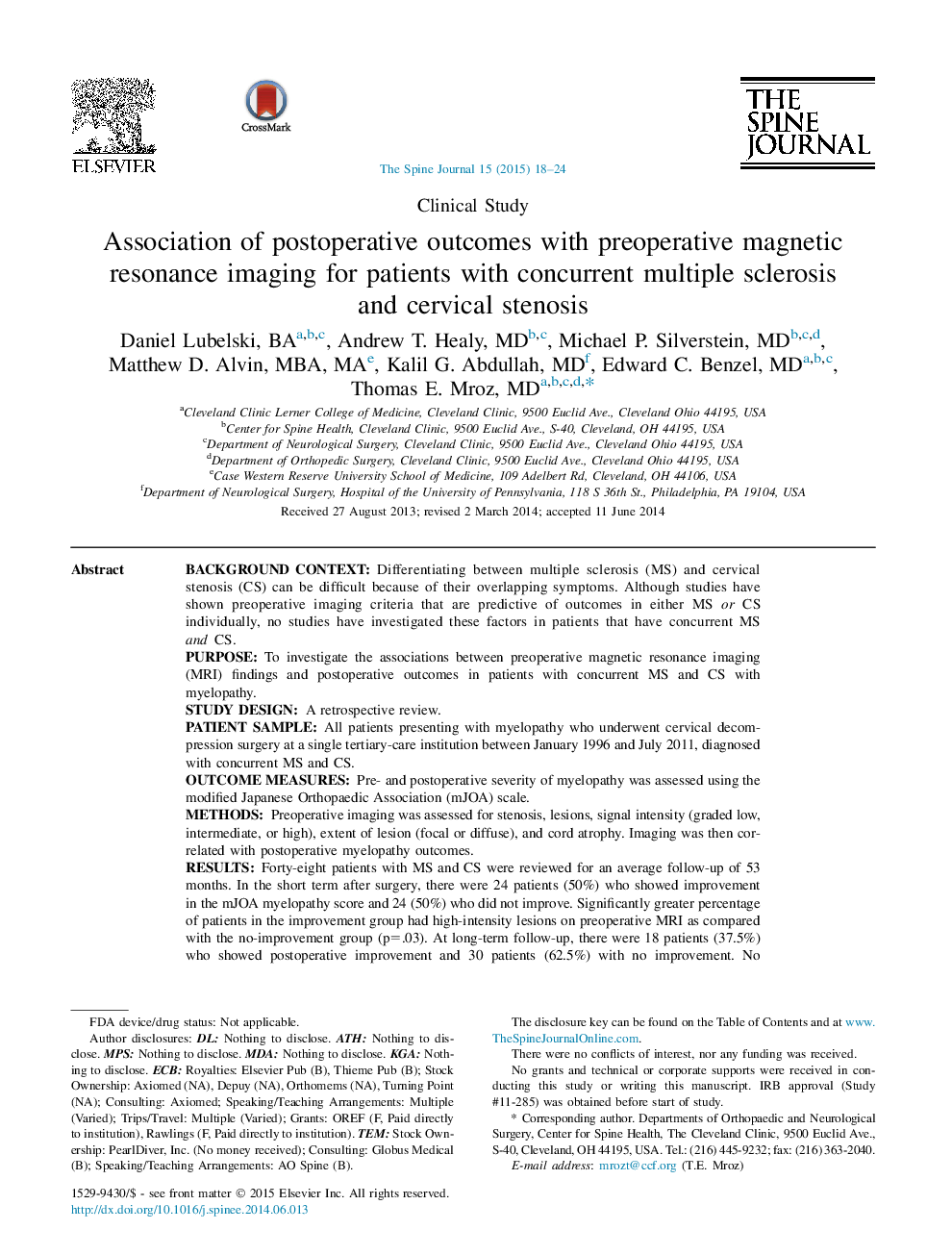| کد مقاله | کد نشریه | سال انتشار | مقاله انگلیسی | نسخه تمام متن |
|---|---|---|---|---|
| 4096494 | 1268564 | 2015 | 7 صفحه PDF | دانلود رایگان |
Background contextDifferentiating between multiple sclerosis (MS) and cervical stenosis (CS) can be difficult because of their overlapping symptoms. Although studies have shown preoperative imaging criteria that are predictive of outcomes in either MS or CS individually, no studies have investigated these factors in patients that have concurrent MS and CS.PurposeTo investigate the associations between preoperative magnetic resonance imaging (MRI) findings and postoperative outcomes in patients with concurrent MS and CS with myelopathy.Study designA retrospective review.Patient sampleAll patients presenting with myelopathy who underwent cervical decompression surgery at a single tertiary-care institution between January 1996 and July 2011, diagnosed with concurrent MS and CS.Outcome measuresPre- and postoperative severity of myelopathy was assessed using the modified Japanese Orthopaedic Association (mJOA) scale.MethodsPreoperative imaging was assessed for stenosis, lesions, signal intensity (graded low, intermediate, or high), extent of lesion (focal or diffuse), and cord atrophy. Imaging was then correlated with postoperative myelopathy outcomes.ResultsForty-eight patients with MS and CS were reviewed for an average follow-up of 53 months. In the short term after surgery, there were 24 patients (50%) who showed improvement in the mJOA myelopathy score and 24 (50%) who did not improve. Significantly greater percentage of patients in the improvement group had high-intensity lesions on preoperative MRI as compared with the no-improvement group (p=.03). At long-term follow-up, there were 18 patients (37.5%) who showed postoperative improvement and 30 patients (62.5%) with no improvement. No significant differences were identified on preoperative imaging between those who improved postoperatively and those who did not.ConclusionsAlthough certain characteristic preoperative MRI findings are associated with postoperative outcomes in cohorts of either MS or CS patients, we did not find this to be the case in patients with concurrent MS and CS. Accordingly, the treatment of the MS/CS patient population should be unique as their outcomes may not be as good as those with CS but no MS.
Journal: The Spine Journal - Volume 15, Issue 1, 1 January 2015, Pages 18–24
